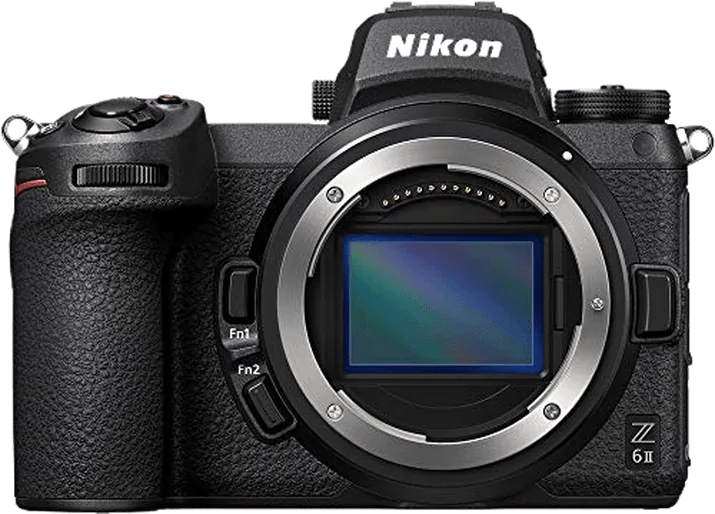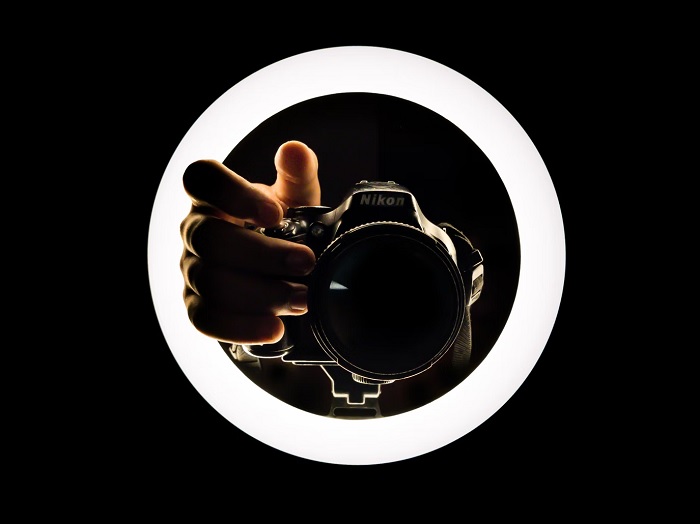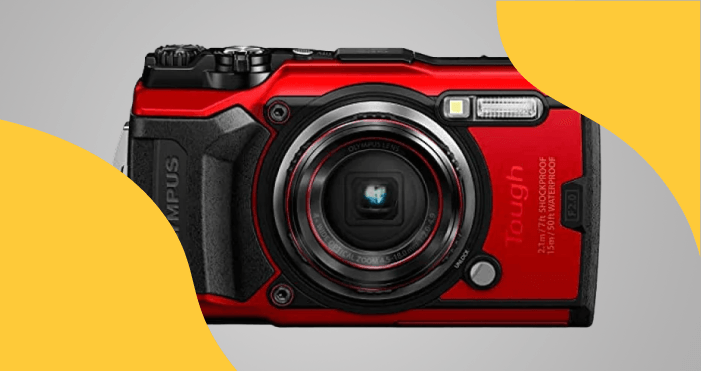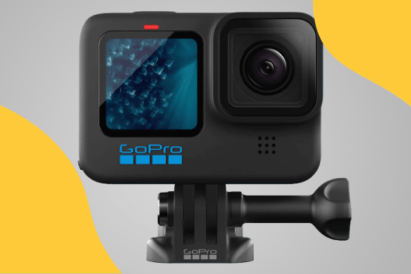Photography is all about light.
You need a strong light source to get the perfect exposure. But many types of photography are performed in low-light situations. It could be wildlife, sports, or concert photography. And when the lights are low, you need a camera that can cope with low-light photography.

Nikon D780
Nikon is a camera manufacturer that’s at the top of the list in many categories. And when it comes to low-light photography, Nikon is the very best. That’s why we’ve compiled this list of the best Nikon cameras for low light.
No matter what your low-light situation is, we’ll find you the best Nikon Camera.

What is the Best Camera for Low Light?
The best low-light camera gives you excellent image quality even when things get dark. Whether you’re shooting animals at dusk, night sports, or rock concerts, the best low-light cameras still produce stunning results.
You need to look out for a few features in low-light cameras. The ISO range is one of the main concerns for night shooters. A wider ISO range gives you more shooting options when shooting in low light. And you’ll also want to consider the dynamic range. Then there’s the image resolution of the camera sensor.
These are the main features we had in mind when compiling our list of the best low-light cameras from Nikon. These Nikon cameras offer fantastic performance when the lights go out.

- Long-exposure presets
- Plenty of autofocus (AF) points
- Nice, uncropped 4K video capabilities
- Dual memory card slots (UHS-II)

- Excellent AF performance in low light
- Wide dynamic range
- 90% AF frame coverage
- 900-second exposure setting

- Powerful 45.7 MP sensor
- Incredible battery life
- Fantastic ISO range
- Rugged and weather-sealed

- Compact DSLR body
- Fantastic ISO range and low-light performance
- Full ISO range available for video recording
- Reliable battery life

- Ultra-wide ISO range for night shooting
- Advanced AF system with tracking
- Dual SD card slots

- Excellent low-light performance and ISO range
- 10 fps burst mode with 200 image limit
- Brilliant video recording in low light

- Excellent image quality for the price
- Wide ISO range for an entry-level camera
- Versatile with a long battery life
- Guide mode for beginners
7 Best Nikon Cameras for Low Light in Detail
Here’s our selection of the best Nikon cameras for low light photography. We’ve included different camera types, including DSLRs and mirrorless cameras. And there’s a Nikon camera for every skill level and budget.
1. Nikon D780

| Camera Type |
Camera Type
|
| Megapixels |
Megapixels
25 MP |
| Sensor Format |
Sensor Format
|
| Sensor Size |
Sensor Size
23.9 x 35.9 mm
|
| Frame Rate |
Frame Rate
12 fps |
| Autofocus Points |
Autofocus Points
51 |
- Long-exposure presets
- Plenty of autofocus (AF) points
- Nice, uncropped 4K video capabilities
- Dual memory card slots (UHS-II)
- Relatively expensive
- No built-in image stabilization
- Noise reduction can be harsh
- No built-in GPS
The Nikon D780 is a superb full frame DSLR camera. It’s a high-performance machine that enthusiasts and professionals will love. And it has all the specifications of an elite low-light camera. It’s not a cheap camera. But you’re guaranteed fantastic low-light performance for any type of photography.
The image sensor has a resolution of 24.5 MP. That doesn’t sound like much from a full frame sensor. But the Nikon FX-CMOS sensor and EXPEED 6 image processor combine to give you stunning image quality. And the large megapixels absorb more light, resulting in a wide dynamic range for detailed shots in all conditions.
The stunning photo quality continues in more testing lighting conditions. The standard ISO range is from 100 to 51,200, which gives you plenty of room to manoeuvre. But this is also expandable to 204,800. That ISO range endears itself to low-light shooting.
But it’s not just the ISO range that’s impressive. It’s the performance within that range. You’ll experience very little digital noise, even as you climb higher in the ISO stops. And the superb low-light performance gives you more control over shutter speed and aperture in dark situations.
The D780 has an advanced autofocus system that remains fast and responsive as light levels reduce. The 273-point Hybrid AF system is sensitive down to -5 EV. And there’s an additional Low-Light AF mode that’s sensitive down to -7 EV. And that includes eye detection and subject tracking.
Other notable features are the 4K video capabilities. The camera body is robust with extensive weather sealing for outdoor shooting. And there are dual card slots, so you never run out of memory. The Nikon D780 is an outstanding camera. And it’s a leader in low-light photography.
2. Nikon Z6 II

| Camera Type |
Camera Type
|
| Megapixels |
Megapixels
24.5 MP |
| Sensor Format |
Sensor Format
|
| Sensor Size |
Sensor Size
35.9 x 23.9 mm
|
| Frame Rate |
Frame Rate
14 fps |
| Autofocus Points |
Autofocus Points
273 |
- Excellent low-light focusing
- Lightweight and portable
- Superb low-light dynamic range
- Dual memory card slots
- Autofocus can be slow
- Relatively short battery life
- Lower MP count than main competitors
- Needs more customizable buttons
The Nikon Z6 II is perfect if you want something from Nikon’s mirrorless range. The Z6 II is a full frame mirrorless camera that excels at low-light photography. It’s a high-performance camera for serious enthusiasts and professional photographers.
The Nikon Z6 II is armed with a full frame FX-format image sensor. The 24.5 MP resolution might not sound like much compared to other full frame cameras. But the quality of the sensor and the image processor are top-of-the-range, giving you fantastic image quality.
The ISO range is from 100 to 51,200. And the sensor and image processor work hard to maintain image quality at higher ISO settings. Digital noise is barely a problem with the Z6 II. And the wide dynamic range gives you incredible detail in low-light conditions.
The 273-point Hybrid AF system gives you precise focusing in low light. It detects eyes and faces, even in dark situations. The AF system has 90% frame coverage, and it tracks the subject as it moves. It’s ideal for low-light wildlife or sports photography. And it performs just as well when recording video.
The body is weather-sealed and durable. And you have excellent 4K video and live streaming capabilities. You also have the benefit of dual card slots. The 900-second exposure is another unique feature that night shooters will love.
3. Nikon D850

| Camera Type |
Camera Type
|
| Megapixels |
Megapixels
45.7 MP |
| Sensor Format |
Sensor Format
|
| Sensor Size |
Sensor Size
23.9 x 35.9 mm
|
| Frame Rate |
Frame Rate
7 fps |
| Autofocus Points |
Autofocus Points
153 |
- Fantastic overall image quality
- Excellent 3D continuous AF tracking
- Long, 1,840-shot battery life
- Durable, weather-sealed construction
- Sharp 4K/30p Ultra HD video
- No customizable shooting presets
- Slow autofocus in Live View
- Needs an expensive XQD card
- Rolling shutter noticeable in 4K video
- Slow 7 fps or 9 fps with an expensive battery grip
The Nikon D850 is one of the best all-around DSLR cameras for professional photographers. And one of its major selling points is the low-light performance. It produces stunning photographs. And it can cope in any environment or situation.
The Nikon D850 has a full frame sensor with a whopping 47.5 MP resolution. That’s professional image quality that can cope with enlargement and publication in any media form. And the dynamic range is also impressive, pulling details from the lightest and darkest areas.
The ISO range is another spec that makes the D850 one of the best cameras for low light. The standard ISO range is 64 to 25,600, which is extendable to 102,400. The 64 ISO setting gives you incredible quality if you have the light. But you lose very little as you scale the higher ISO settings.
The Nikon D850 has been on the market for several years now. And the autofocus system isn’t as advanced as some newer competitors. But it gives you excellent low-light focusing. It uses 153 focus points that lock focus and track your subject.
The time-lapse capabilities are fantastic, with 4K and 8K options. It bypasses the mechanical shutter to reduce any sign of camera shake. There’s also 4K video recording, weather sealing, and a 7 fps burst. And the battery life is excellent too. But it does lack image stabilization, which is unfortunate.
You can check out our full comparison with the D780, D800, or D750 too!
4. Nikon D7500

| Camera Type |
Camera Type
|
| Megapixels |
Megapixels
20.9 MP |
| Sensor Format |
Sensor Format
|
| Sensor Size |
Sensor Size
15.7 x 23.5 mm
|
| Frame Rate |
Frame Rate
8 fps |
| Autofocus Points |
Autofocus Points
51 |
- Great value for money
- Smaller, compact DSLR body
- Easy to handle and hold
- Long battery life
- Images not as sharp as other cameras
- Limited to crop sensor (DX) lenses
- No USB charging
- Just one memory card slot
The Nikon D7500 is the best low-light camera if you’re looking for something from the crop sensor division. This DSLR has fantastic low-light capabilities. And the APS-C sensor makes the D7500 a highly usable and compact camera.
The DX-Format sensor gives you 20.1 MP of resolution. It’s a powerful sensor, extracting all the information from the pixels to give you high-quality images. And the quality continues when shooting in very low light. The camera undertakes active noise reduction.
The ISO is more than healthy for low-light cameras. You have a standard ISO range of 100 to 51,200. But you can expand the top level to 1,640,000. That broadens the possibilities for low-light photography. You can keep shooting well into the night.
The autofocus system is responsive and reliable, traits that continue when light conditions are more testing. It doesn’t give you full frame AF coverage, meaning you have to keep your subject centered. But the 51-point system locks focus well and tracks moving subjects.
The Nikon D7500 also gives you low-light video options. You can record in 4K with auto ISO control. And there’s Full HD video that you can convert into slow-motion footage. The Nikon D7500 is one of the best low-light cameras with an APS-C sensor.
5. Nikon D5

| Camera Type |
Camera Type
|
| Megapixels |
Megapixels
20.8 MP |
| Sensor Format |
Sensor Format
|
| Sensor Size |
Sensor Size
23.9 x 35.9 mm
|
| Frame Rate |
Frame Rate
12 fps |
| Autofocus Points |
Autofocus Points
153 |
- Advanced 153-point AF system
- Excellent ISO range and low-light performance
- Extra-capacity dual card slots
- Weather-sealed, durable body
- Long-lasting battery life
- Very expensive camera
- No sensor-shift image stabilization
- Heavy camera body
- No Wi-Fi connectivity
- Short 4K video recording time limit
The Nikon D5 is a professional full frame DSLR camera. It’s an expensive machine. But the D5 is a true low-light specialist. It has powerful image processing and the highest extendable ISO range of any Nikon camera. It has to be on the list of Nikon’s best low-light cameras.
The FX-Format CMOS full frame sensor has 20.8 MP of resolution. The D5 sensor has powerful image metering that gives stunning results in all lighting conditions. And the advanced image processor keeps noise to a minimum.
The standard ISO range is 100 to 102,400, which is impressive as it is. But you can extend the high end to an incredible 3,280,000 ISO in the Hi 5 setting. You won’t find many other cameras with that kind of ISO range. You can capture images in the darkest of conditions. And you’ll still have high-quality color images.
The Nikon D5 also gives you fantastic video options. You can record 4K quality video at 30 or 25 fps. Or there’s Full HD at 50 or 60 fps. And you get the full ISO range for video mode, making it one of the best low-light cameras for videographers.
The lack of an image stabilization system does let the camera down. That would help to reduce noise in low light when using slower shutter speeds. But even without image stabilization, the Nikon D5 is a favorite of professionals working in low-light conditions.
6. Nikon D500

| Camera Type |
Camera Type
|
| Megapixels |
Megapixels
20.9 MP |
| Sensor Format |
Sensor Format
|
| Sensor Size |
Sensor Size
15.7 x 23.5 mm
|
| Frame Rate |
Frame Rate
10 fps |
| Autofocus Points |
Autofocus Points
153 |
- Excellent low-light performance
- 10 fps RAW burst with 200-image limit
- Weather-sealed body
- Long-lasting battery life
- 4K video with ports for external sound recording
- Low resolution for an APS-C Sensor
- No advanced bird or animal AF
- Slow AF in Live View
- Heavy DSLR body
- 4K video is cropped
The Nikon D500 is a specialist camera for wildlife photography. As many wildlife photographers know, some of the best times for shooting wildlife are dawn and dusk. And these times of day are some of the most difficult to photograph due to the low-light conditions. But the Nikon D500 is designed to confront these very problems.
The Nikon D500 uses a DX-Format APS-C sensor with a resolution of 20.9 MP. And with the EXPEED 5 processor, you won’t be disappointed with the results. It gives you fabulous image quality in low light, working well down to -4 EV.
Shooting sport or wildlife in darker situations has its challenges. You can’t use a slower shutter speed because of motion blur. So you need a wide ISO range. And the D500 has exactly that. The native ISO is 100 to 51,200. And you can expand the higher level all the way to 1,640,000 ISO. And there’s very little compromise in quality when you push the ISO higher.
Videographers will be pleased with the low-light video specs. You have 4K video at 25 or 30 fps. And there’s Full HD at 60 fps. And the Nikon D500 gives you the entire ISO range in all video modes for superb video recording in low-light scenes.
The Nikon D500 has a rugged body. And it has the reliable weather sealing you’d expect from a wildlife and sports camera. And you get 10 fps with full autofocus tracking in the burst mode. The Nikon D500 is a sports and wildlife specialist. And that makes it one of the best cameras for low-light photography.
7. Nikon D3500

| Camera Type |
Camera Type
|
| Megapixels |
Megapixels
24 MP |
| Sensor Format |
Sensor Format
|
| Sensor Size |
Sensor Size
15.6 x 23.5 mm
|
| Frame Rate |
Frame Rate
5 fps |
| Autofocus Points |
Autofocus Points
11 |
- Excellent image quality
- Guide mode for beginners
- Easy to use and wide functionality
- Long battery life
- No touchscreen
- No 4K video
- No Wi-Fi, only Bluetooth
- Screen does not rotate
The Nikon D3500 is the perfect all-around camera for beginners. It has the specs and features a beginner needs to feed their enthusiast for photography. They can build their photography skills, and they’ll be encouraged by the results. And its low-light performance allows beginners to shoot in different situations.
The APS-C CMOS sensor has a resolution of 24.2 MP. It’s more than respectable for this camera’s price range and skill level. And the results are fantastic. There are excellent tones and color rendering. The dynamic range is good, but very bright areas are often blown out.
The Nikon D3500 has an excellent ISO range for an entry-level camera. You have a base of 100 and a top limit of 25,600 ISO. That gives you plenty of room for experimentation. You can shoot music concerts, wildlife, and night cityscapes.
The autofocus system is basic. But it works well and continues to work well in low light. It uses 11 focus points positioned across the screen. And it locks on to your subject and tracks them as they move. This is limited to the AF zone in the center of the frame. But it’s a handy feature when shooting moving subjects.
Beginners will also love the Full HD video recording. The recording time is limited. But the video quality is just as good as the photos. There’s a 5 fps burst mode for action photography. And Bluetooth connectivity. The Nikon D3500 is a fantastic entry-level all-rounder. And it’s the best Nikon option for beginners who want to shoot in low light.

Our Verdict
Whether you’re shooting indoor sports or wildlife at dusk, you need a camera that can cope with low-light situations. You need to know your camera can produce stunning images even when the lights are out. That’s why low-light photographers choose Nikon cameras.
The Nikon D780 is the best Nikon camera for low light. It’s a fantastic DLSR camera, engineered for powerful low-light performance. There’s the Nikon Z6 II if you want a full frame mirrorless camera. And there’s the D850 if you need a robust professional model. The Nikon D3500 ends our list, so beginners can also try their hand at low-light photography too.

Nikon D780
Low light photography isn’t easy. It demands a lot from the photographers and the cameras. But we know Nikon cameras can cope with those demands. In fact, they thrive under the pressure, giving you outstanding photos even in the dark.
Check out our new post on the best cameras for skateboarding or cameras for artists next!













